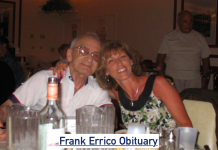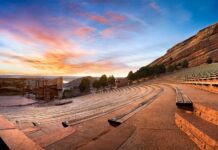Before booking a reservation or adding a restaurant to their “must try” list, more than 80% of diners check out its website. In a sense, a visitor’s initial impression of your restaurant comes from its website. Your restaurant has to stand out from the competitors with its overall website design, menu, photos, and online reservation system.
What distinguishes the top restaurant websites from the mediocre ones, though? The user experience (UX) design provides the solution. When creating your first website or redesigning an existing one, there are many design concepts you can use to make it one that users will like visiting. For this reason, we’ve compiled a list of 6 excellent restaurant websites along with the UX design elements that contribute to their success.
- Vallier Bistro
The Vallier Bistro in Montreal is an excellent location to begin. Let’s start by taking a look at how they set out their layout. The serial position effect, a UX concept, is being used in this situation. This rule states that the most significant user actions have to be situated far to the left or right. It draws attention to the menu, about page, picture gallery, and contact details in this instance.
For instance?
The information at the top and bottom of a list is more likely to be remembered and drawn to by readers, according to the serial position effect. It’s no accident that Vallier Bistro positioned a button to make an online reservation last and their menu first. They want prospective visitors to notice and respond to those calls-to-action (CTAs) the most.
- Café Propositio
100% vegan food is served at Brazil’s Cafe Proposito (“coffee with a purpose”). Their website does a fantastic job implementing the rule of common region and the law of proximity, two UX concepts that often go together. According to the rule of common region, information on a website is seen as belonging to a group by users when it occupies the same physical space and is divided from that space by a distinct border. This guideline is crucial because it makes the content of your website far more “scannable,” or understandable to site visitors at a glance (assuming you speak Portuguese, of course).
According to the rule of proximity, website users prefer to group together material and items (such as images, symbols, text, and buttons) that are near to one another. When it comes to planning how to organise the content on your website, this law is tremendously helpful. To indicate to visitors to your website that two pieces of content are related, group them together. They can quickly scan the content of your website thanks to it.
For instance?
In order to make the visual distinction of the information as plain as possible, Cafe Proposito performed a fantastic job of combining comparable material into the same area and providing clear visual borders in the form of line breaks, various background colours, and headers. The outcome? a website that is very scrollable and readable.
Site for Cafe Proposito
Just one example of what Cafe Proposito excelled at. To see the remainder of their fantastic branding, go here.
- Thomas Holt Roasters
Thomas Holt Roasters also benefits from the laws of proximity and common region. But one thing that they emphasise much more is gorgeous, high-resolution food photography. A bad photo can have a negative impact, but a great photo can boost sales of that item by as much as 30%. Therefore, if you’re going to use a photo, think carefully about how to use it and focus on the menu items you want to stand out the most (i.e., the ones with the highest profit margins).
For instance?
From the website to the menu, Thomas Holt Roasters did a fantastic job of developing a comprehensive visual aesthetic for their visitors.
Website for the restaurant Thomas Holt Roasters
Want to design a menu that is as lovely as Thomas Holt Roasters’s? Contact us if you want to establish a stunning website for your restaurant.
- Bar à Beurre
The main feature of Montreal’s Bar à Beurre’s website is a carousel of images. But what drove that choice of design? According to the UX Law of Prägnanz, the human eye prefers to simplify anything it processes in order to keep us from becoming overloaded with data. For this reason, we assume Bar a Beurre used this strategy to create a clear, straightforward website design.
The images stand out in contrast to the white, crisp background.
By maintaining balance, information is not overloaded onto website visitors.
Occam’s razor, which suggests that you should limit the information you provide on your website to a minimal, is another UX principle that Bar à Beurre unquestionably adopted. Make sure that everything you provide on your site is valuable. This helps you maintain the spotlight on what actually important. In this instance, it’s the product photography.
- H Cafe
Similar to Bar à Beurre, Los Angeles hotspot H Cafe leverages the Law of Prägnanz and Occam’s razor to build a basic, minimal, and easy-to-browse website. But if we go deeper, they’re also employing the serial position effect and high-resolution food photography. As we said previously, the serial position effect states that your website should push the most critical user activities to the far left or right. Their navigation bar is on the top-right, and it comprises the most crucial information: their menu and their contact information. Bonus, they employ a design that appears nicely on smartphone applications.
H Cafe – restaurant website
H Cafe doesn’t overdo food photography but seeks to offer only four high-quality photographs instead. Remember, when it comes to photos, quality above quantity — always!
Restaurant web design: putting it all together
One of the persistent commonalities between each of the instances above is that the information arrangement was developed to optimise the website’s usability. In their own way, they all accomplish it. And that’s what makes UX design so fantastic. It’s a set of guidelines for design while leaving you a lot of latitude to convey your brand.
These guidelines aid in organising your website design, ensuring that it is easy to navigate and directs site users to the appropriate content. As long as you put the usability of your website at the centre of your design, you’ll create something that your consumers will value and that will boost the legitimacy of your restaurant. Remember that more than 80% of diners look up a restaurant’s website prior to booking a reservation.































